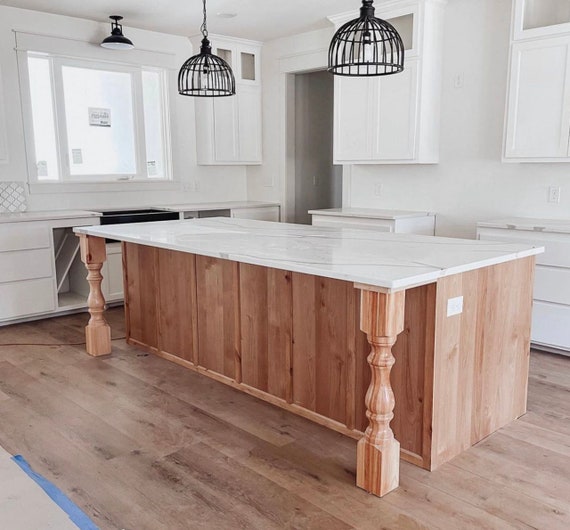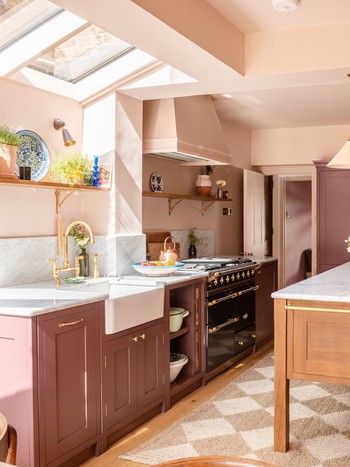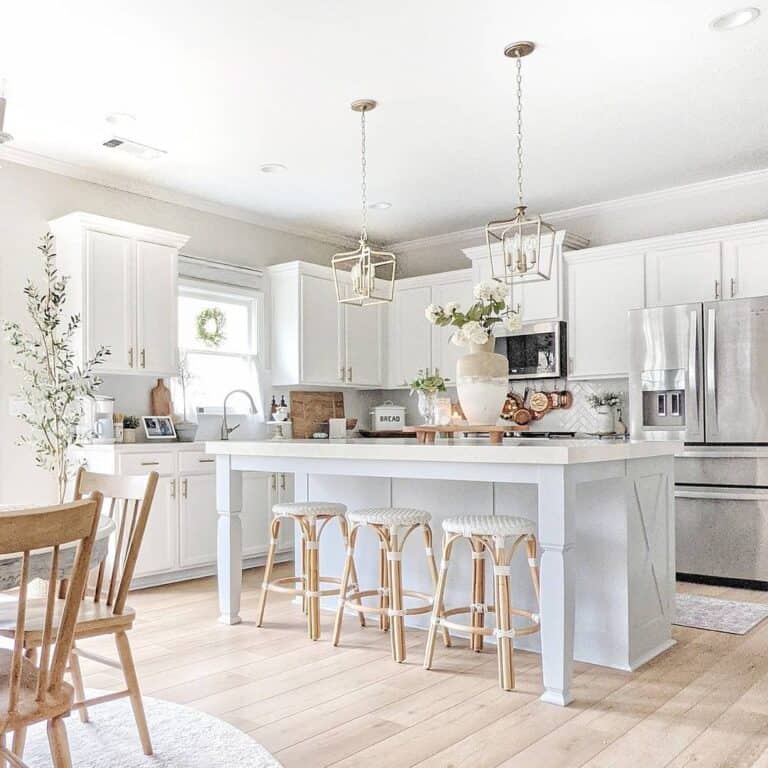Produce a Spectacular Prime Focus with Sophisticated Legs For Kitchen Island
Produce a Spectacular Prime Focus with Sophisticated Legs For Kitchen Island
Blog Article
Essential Variables to Take Into Consideration When Picking Legs For Kitchen Area Island
Choosing the appropriate legs for a kitchen island entails a cautious evaluation of multiple variables that can dramatically affect both functionality and visual charm. Among these, the choice of product plays a critical role in making certain toughness, while the style must enhance the existing decoration. Factors to consider such as height and weight assistance are important for security and comfort. As we discover these aspects, it comes to be clear that each decision can have far-reaching ramifications for the overall kitchen area experience. What nuances should be thought about in each of these categories to accomplish the perfect equilibrium?
Product Options
When selecting legs for a kitchen area island, recognizing the various material alternatives is vital for attaining both visual appeal and architectural honesty (Legs For Kitchen Island). The option of product dramatically affects not only the toughness of the island yet also its overall style and capability
Metal legs, typically made from stainless steel or wrought iron, contribute a modern and industrial feeling while making certain longevity and security. These products are resistant to wear and can support significant weight, making them excellent for bigger islands.
One more choice is engineered materials, like MDF or plywood, which can be extra cost-efficient while still supplying a series of surfaces. They might not give the exact same level of security as strong wood or steel. Legs For Kitchen Island. Products such as acrylic or glass can produce a contemporary appearance, though they may call for extra support to make certain stability.
Ultimately, the choice of material for cooking area island legs ought to align with the preferred functionality and the total style of the cooking area.
Design And Style

When thinking about style, the shape and finish of the legs are vital. Tapered legs can offer a sense of lightness and beauty, while thicker, much more robust legs can convey strength and security. Furthermore, the surface-- be it painted, stained, or natural-- should complement the kitchen cabinetry and kitchen counter products to produce a unified look.
Furthermore, the design of the legs can additionally mirror individual taste. Customized or decorative legs, such as those including complex carvings or distinct geometric shapes, can offer as focal factors, adding personality and individuality to the kitchen area. Ultimately, the right selection will certainly not only boost performance but also boost the aesthetic appeal, making the cooking area island a standout function of the home.
Elevation Factors To Consider
Selecting the appropriate elevation for kitchen island legs is crucial, as it straight affects both capability and convenience. The basic elevation for a kitchen area island typically varies from 36 to 42 inches, aligning with usual counter top elevations. A 36-inch height is excellent for cooking and cooking, permitting comfortable usage of kitchen home appliances and devices. On the other hand, an elevation of 42 inches is typically preferred for islands meant for bar seats, fitting taller feceses and offering an informal dining experience.

It is likewise important to account for users' elevations and preferences. Customizing the elevation can guarantee a comfortable experience for all member of the family, making the cooking area island a much more practical and enjoyable area.
Weight Support
Making certain appropriate weight assistance for kitchen Get More Info area island legs is vital for both safety and security and functionality. The cooking area island typically offers several objectives, including cooking, dining, and added storage, my review here requiring a robust support framework. When selecting legs, it is critical to consider the total weight capacity needed based upon the island's intended usage and the products that will be positioned on it.
The selection of material for the legs plays a substantial duty in their weight-bearing abilities. Strong timber, metal, and durable compounds generally supply premium strength compared to lighter products. In addition, the design of the legs-- whether they are directly, tapered, or have a pedestal kind-- can affect their ability to distribute weight successfully throughout the structure.
Always consult the manufacturer's specifications regarding load limits to ensure that the legs can maintain the desired weight without endangering security. In summary, selecting kitchen island legs with adequate weight assistance is crucial for developing a functional and safe cooking area.
Setup and Maintenance
Proper installment and maintenance of cooking area island legs are vital for ensuring long life and stability. This commonly involves safeguarding the legs to the island base using ideal fasteners, making certain that the legs are level and lined up.
Once set up, normal maintenance is essential to preserve the stability and appearance of the legs - Legs For Kitchen Island. For wooden legs, routine cleaning with a moist towel and application of suitable timber gloss can prevent wetness damages and maintain their surface. Steel legs may need a mild cleaning service to get rid of grease and grime, complied pop over to these guys with by a completely dry cloth to avoid corrosion formation
In addition, evaluate the legs frequently for indications of wear or damages, such as splits or loosened joints. Tightening up screws or bolts as needed can also prolong the life expectancy of the legs. By adhering to these setup and maintenance methods, house owners can make sure that their cooking area island continues to be tough and aesthetically appealing for several years ahead.
Verdict

Visual comprehensibility is critical in choosing the design and layout of legs for a kitchen island, as these elements considerably affect the total setting of the space. Tapered legs can offer a sense of agility and style, while thicker, extra robust legs can convey strength and stability.Selecting the proper elevation for kitchen area island legs is critical, as it straight influences both functionality and comfort. In summary, selecting kitchen island legs with adequate weight support is important for producing a risk-free and functional culinary area.
In final thought, choosing legs for a kitchen island demands careful factor to consider of numerous elements, including material options, design, height, weight support, and installation.
Report this page